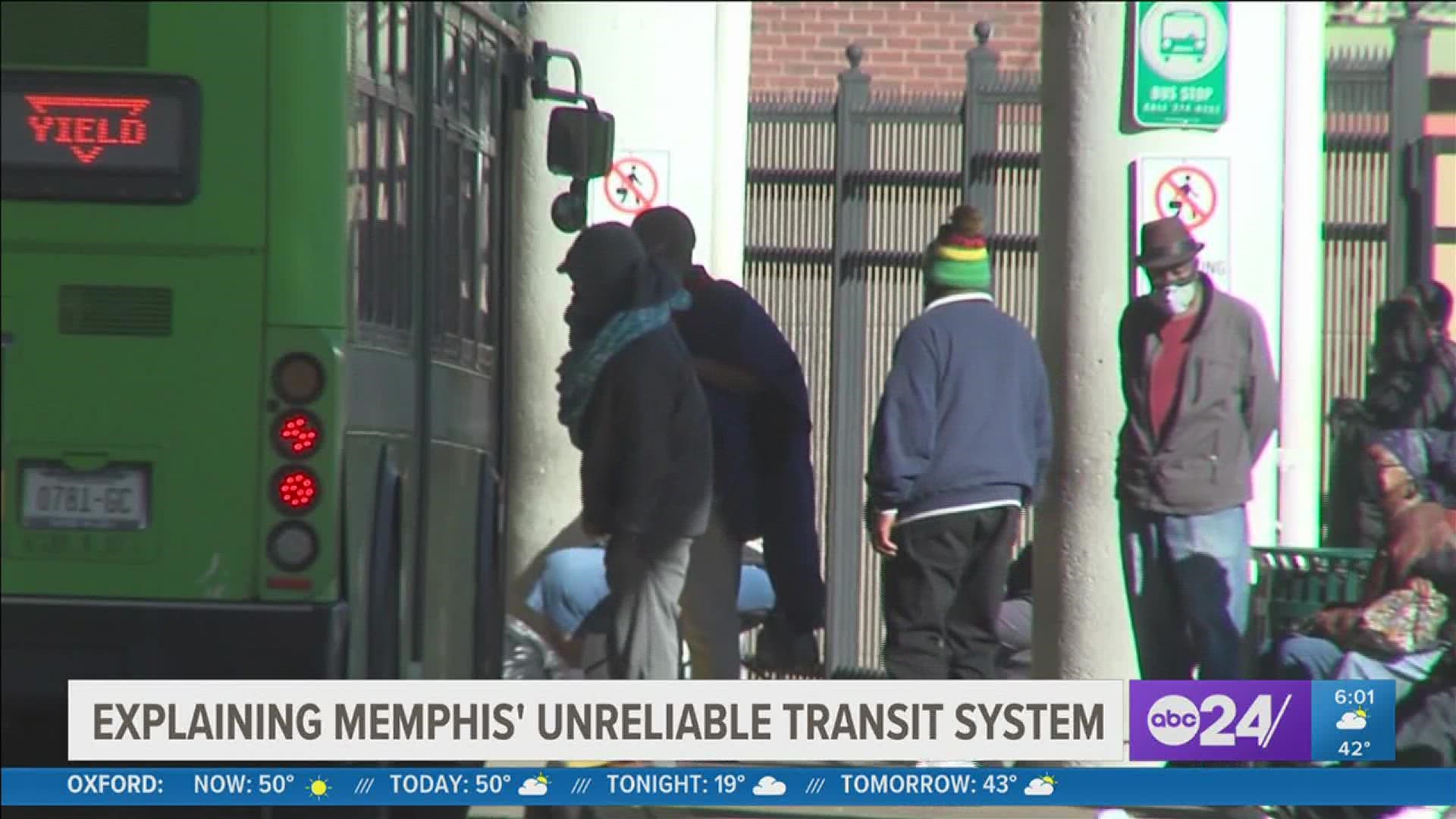MEMPHIS, Tenn. — Right now the Memphis Area Transit Authority is dealing with driver shortages due to COVID-19, and they cut 20 routes back in November.
That can make reliable transit difficult. One University of Memphis professor said another factor affects your commute: population density.
"Memphis is an exceptionally sprawled city, even for the American South, which is saying something," said Andrew Guthrie, a professor of city and regional planning at the U of M.
Population density refers to how many people you have per square mile.
Based on U.S. census data, Memphis has roughly 633,000 people spread out over 315 miles. That’s roughly 2,000 people per mile and Guthrie said public transit lends itself best to denser areas.
"That means that you need a lot of potential. You need a lot of potential riders, and a lot of potential destinations, concentrated within convenient walks of your system, to have a high level of demand, and then high level of transit utilization," Guthrie said.
Guthrie said transit systems like MATA try to concentrate similar trips together, and believes MATA does a respectable job with their level of funding. Bus transfers are where people can catch their largest delays.
But he also said Memphis’s relationship to the Mississippi River to its west creates much of its suburban sprawl.
"Which means, kind of, all of our sprawl happens in three directions, instead of four. So you end up with areas being sort of unusually far. Suburban areas are unusually far from downtown," Guthrie said.
As Memphis continues to develop, Guthrie would like to see the city build more up than out. Building on currently vacant lots or areas like parking lots can create stronger population density. He said that also creates a sensitive relationship with the city's poorer population, which often needs public transit most.

